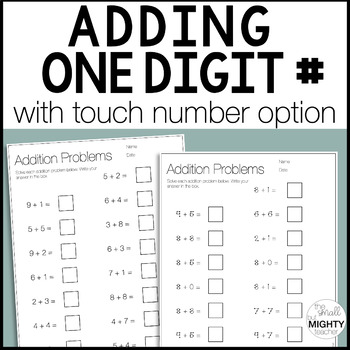Addition with one digit - touch number math worksheets for Secondary Students
- PDF
Description
Adding with one digit worksheets - age appropriate for special education students who benefit from clear worksheets without distracting visuals.
Ideas for use:
- homework - independent practice
- small or large group instruction
- data collection - quickly and easily take data throughout the year on IEP / other goals
This includes:
- 12 worksheets - 15 problems each (no touch numbers)
- 12 worksheets - 15 problems each (with touch numbers)
- answer key
- worksheets are labeled as 1-12 for easy data collection and use
Collect Data on this skill with my FREE data sheet collection.
Download the data sheets HERE!
______________________
✉ Questions? ✉
Please check out the full list before purchasing to ensure that this meets your needs!
If you have any questions feel free to ask in the FAQ or email me: Anna@thesmallbutmightyteacher.com
☆ Follow Me ☆
CLICK HERE to follow my store -- you will be the first to know about new resources, sales, discounts & more!
☑ Earn TpT credits! ☑
Leave feedback and earn TpT credits for future purchases. Look under "My Purchases" and click on "Leave A Review" - your feedback helps future buyers and me to create better resources for you ☺





